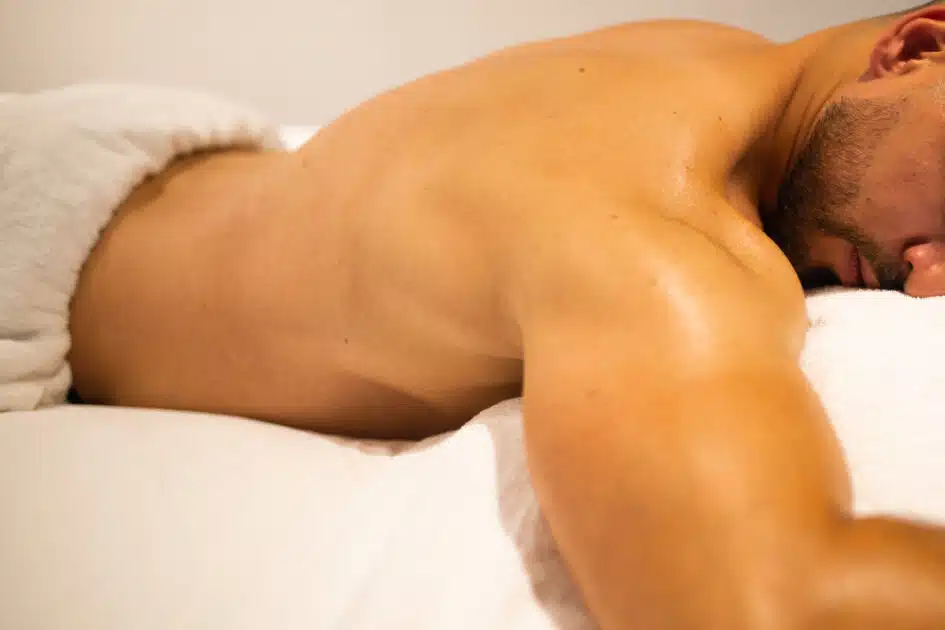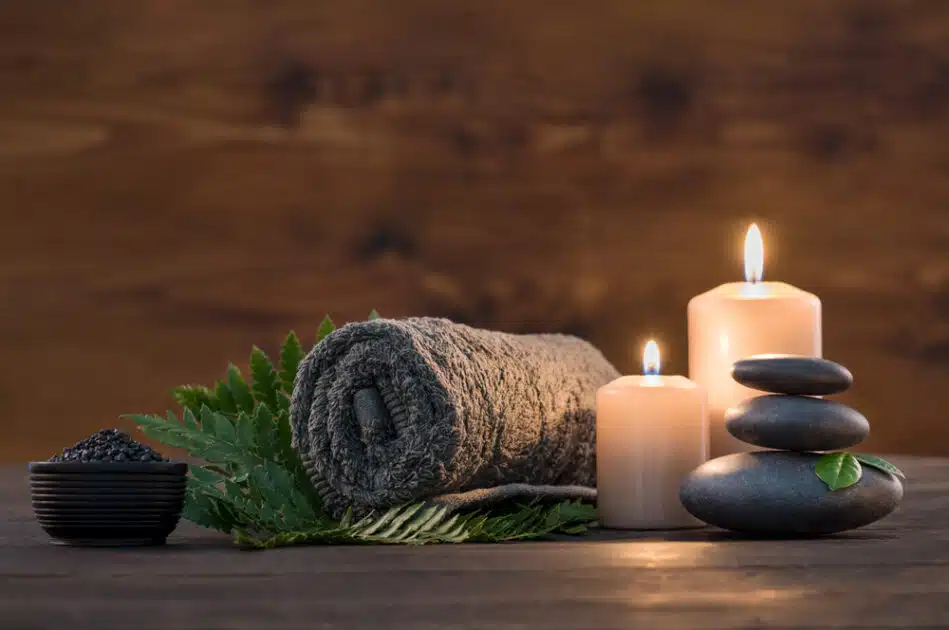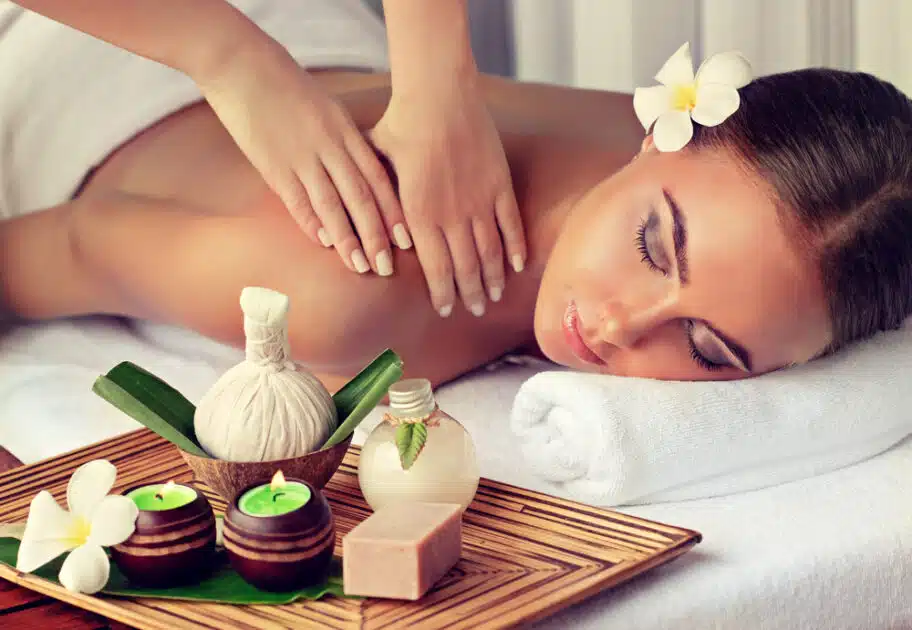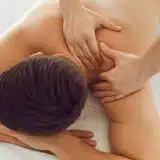How to Massage, Techniques, Tips, and 9 Ways to Take Things to the Next Level

Mastering the Art of Massage: Discover Different Techniques, Learn Tips to Enhance Your Skills, and Explore 9 Ways to Elevate Your Massage Game
What is Massage 19th Apr, 2023
Ever wanted to give an amazing massage that leaves the recipient feeling relaxed, rejuvenated, and craving more? You’re in the right place! In this article, we’ll share some essential massage techniques, tips, and tricks to help you elevate your massage skills to the next level.
Whether you’re a complete beginner or a seasoned masseuse looking to refine your craft, these insights will surely help you impress and provide the ultimate relaxation experience. So, let’s dive in and get those hands ready for some magic!

Set the mood
Before you even begin, it’s crucial to create a soothing and comfortable environment. Dim the lights, play some calming music, and light a few scented candles. Make sure the room temperature is warm and inviting. Lay out clean towels and have some massage oil or lotion on hand. Setting the stage for relaxation is the first step in a successful massage experience. To achieve this, consider the following tips:
Dim the lights
Soft, warm lighting helps to create a calming atmosphere. Consider using dimmer switches, lamps with lower-wattage bulbs, or even fairy lights to achieve the desired ambiance.
Play calming music
Choose gentle, instrumental music or nature sounds that can help drown out background noise and allow the recipient to focus on the massage experience. Keep the volume low, so it doesn’t distract from the massage.
Light scented candles or use essential oils
Aromatherapy can greatly enhance the massage experience. Use an essential oil diffuser or light-scented candles to disperse the fragrance throughout the room.
Adjust room temperature
Ensure the room temperature is warm and inviting, as the recipient will likely be partially or fully unclothed during the massage. Providing a cozy blanket or heated massage table can also enhance comfort levels.
Prepare clean towels and linens
Use freshly laundered towels or linens for the massage table or mat, ensuring they are soft and comfortable for the recipient to lie on.
Massage oil or lotion
Have a selection of massage oils or lotions on hand, ideally with different scents and properties to cater to the recipient’s preferences. Warm the oil or lotion slightly before applying it to the skin for added comfort.
Offer refreshments
Providing a glass of water, herbal tea, or a light snack can help the recipient feel pampered and cared for during their massage experience.
By setting the stage for relaxation, you can create an inviting environment that enhances the massage experience and allows the recipient to fully unwind and enjoy the benefits of your touch.

Use Proper Body Mechanics
To give a great massage, it’s essential to use your body efficiently and protect yourself from injury or strain. Here’s how you can maintain proper posture and technique while giving a massage:
Stand with good posture: Keep your back straight, shoulders relaxed, and knees slightly bent. This stance allows you to use your body weight to apply pressure effectively and reduces the risk of straining your back.
Engage your core: By engaging your core muscles, you’ll have better control and stability during the massage, enabling you to apply pressure more effectively and evenly.
Maintain a relaxed posture with your hands and wrists: Tensing your hands and wrists over time can cause pain and damage.
Use your body weight: Lean into the strokes with your entire body, allowing you to provide a deeper, more comfortable massage without overexerting yourself.
Move from your hips: When giving a massage, initiate movement from your hips and legs rather than your arms and shoulders. This technique helps distribute the pressure evenly and prevents strain on your upper body.
By using proper body mechanics, you’ll not only give a more effective and enjoyable massage, but you’ll also protect yourself from discomfort and injury, ensuring that you can continue to provide great massages for years to come.
Warm-up the Muscles
Before diving into more focused techniques, it’s essential to warm up the muscles to enhance relaxation and prevent injury. One effective way to do this is by using long, gliding strokes, also known as effleurage. Here’s how to perform this technique:
- Position yourself: Stand alongside the recipient, placing one hand at the top of the area you’ll be massaging and the other hand at the bottom.
- Apply oil or lotion: To ensure smooth gliding strokes, apply a small amount of massage oil or lotion to your hands and gently spread it over the area to be massaged.
- Glide your hands: With both hands flat and fingers together, use long, sweeping motions to glide your hands along the muscle fibers’ direction. Start with gentle pressure, gradually increasing it as the recipient’s muscles begin to relax. Make sure to maintain even pressure throughout the stroke.
- Maintain contact: As you reach the end of each stroke, keep one hand in contact with the recipient’s body while you reposition the other hand to start the next stroke. This continuous contact helps maintain relaxation and connection throughout the massage.
- Repeat: Continue performing effleurage for several minutes, making sure to cover the entire area you’re working on. This technique helps stimulate blood flow, warm up the muscles, and prepare them for deeper massage techniques.
By warming up the muscles through effleurage, you create a foundation for a more effective and enjoyable massage experience, allowing you to delve deeper into specific techniques with greater ease and comfort for both you and the recipient.

Incorporate Kneading Techniques
After warming up the muscles, you can move on to kneading techniques like petrissage, which are highly effective in releasing tension and promoting relaxation. Here’s how to incorporate petrissage into your massage routine:
- Position your hands: Place your hands on either side of the muscle group you’re working on, with your fingers and thumbs facing each other.
- Lift and squeeze: Gently lift and squeeze the muscle between your fingers and thumbs, applying moderate pressure. Be mindful of the recipient’s comfort level, and adjust the pressure accordingly.
- Roll the muscles: As you lift and squeeze the muscle, use your fingers and thumbs to roll the tissue between them, working methodically across the body. This rolling motion helps to break up knots and tight spots in the muscles.
- Maintain a rhythm: Work at a steady pace, creating a rhythm with your kneading technique. This consistency helps to enhance relaxation and deepen the massage’s effects.
- Move across the body: Continue to lift, squeeze, and roll the muscles, methodically working your way across the body. Be sure to cover the entire area you’re massaging, paying particular attention to areas where tension is most evident
By incorporating kneading techniques like petrissage into your massage, you can effectively release tension, improve circulation, and promote deep relaxation for the recipient. It’s an excellent way to take your massage skills to the next level and provide a truly therapeutic experience.
Discover more about the various massages.
Recommended:
Discover the Healing Power of Touch: 7 Types of Massage and Their Amazing Benefits
Utilize Percussion Strokes
Percussion strokes, also known as tapotement, offer a unique way to invigorate muscles and stimulate the nervous system. These rhythmic techniques involve tapping, chopping, and cupping motions that can reenergize the body during a massage. Here’s how to effectively utilize percussion strokes:
- Choose your technique: There are several different percussion techniques, such as tapping with your fingertips, chopping with the sides of your hands, or cupping your hands and gently striking the body. Select the method that feels most comfortable for you and appropriate for the recipient.
- Maintain a steady rhythm: The key to effective percussion strokes is maintaining a consistent rhythm. Start with a slow, steady pace and gradually increase the speed as the recipient becomes accustomed to the sensation.
- Adjust the intensity: Percussion strokes can vary in intensity, so it’s important to gauge the recipient’s comfort level and adjust your pressure accordingly. Begin with light taps, gradually increasing the force as long as the recipient remains comfortable.
- Target specific muscle groups: Focus your percussion strokes on specific muscle groups, such as the back, shoulders, or thighs. This targeted approach can help stimulate blood flow and release tension in those areas.
- The transition between techniques: As you progress through the massage, consider alternating between different percussion techniques to provide a varied experience for the recipient. For example, you might switch from tapping to chopping or cupping to keep the massage engaging and dynamic.
By incorporating percussion strokes into your massage repertoire, you can provide an invigorating and stimulating experience that helps to awaken the senses and reenergize the body. Remember to stay mindful of the recipient’s comfort and adjust your technique as needed to ensure a positive and enjoyable experience.

Focus On Trigger Points
Trigger points, often referred to as muscle knots, are tight, tender areas within muscles that can cause pain and discomfort. To address these problematic spots, use your fingers, knuckles, or a specialized massage tool to apply targeted pressure.
Hold the pressure for several seconds, allowing the tightness to release, then proceed to the next area. Communication is vital during this process, so be sure to check in with the recipient to confirm their comfort level with the pressure being applied.
By focusing on trigger points, you can effectively alleviate muscle tension and provide much-needed relief to your massage recipient.
Stretch and Mobilize
Incorporating gentle stretching and mobilization techniques into your massage routine can greatly improve the recipient’s flexibility and range of motion.
As you work on their muscles, be sure to carefully move their limbs and joints through their natural range of motion, always being mindful not to force or overextend any area.
Stretching is an excellent way to release tight muscles, and when done correctly, it can significantly enhance the overall massage experience, leaving the recipient feeling relaxed and rejuvenated.

Customize Your Approach
Taking a customized approach to massage means being attentive and adaptable to the recipient’s unique needs. Here are a few ways to further personalize your massage techniques:
- Ask about preferences: Before you begin, take the time to ask the recipient about their preferences, such as areas they’d like you to focus on, pressure levels, and any sensitivities or allergies they might have. This will help you tailor your massage to their specific requirements.
- Observe body language: While massaging, be mindful of the recipient’s body language. If they tense up, wince, or express discomfort, adjust your technique or pressure accordingly. Conversely, if they seem to be enjoying a particular technique, consider spending more time on that area.
- Communicate during the massage: Encourage the recipient to provide feedback during the massage. Open communication allows you to make adjustments and ensure their comfort throughout the session. Make sure to ask questions like, “How does this pressure feel?” or “Would you like me to focus more on this area?”
- Adapt your techniques: As you gain experience and get to know the recipient’s preferences, consider incorporating new techniques or modalities into your massage routine. For example, you could experiment with hot stone massage, aromatherapy, or reflexology to elevate the experience.
- Take note of progress and feedback: If you’re providing regular massages to the same person, keep track of their feedback and any changes in their preferences or needs. This will allow you to continually refine your approach and deliver the most effective and enjoyable massages possible.
By focusing on customization and maintaining open communication, you can create a massage experience that caters to the recipient’s unique needs, resulting in a deeply satisfying and therapeutic session.
Practice, practice, practice
Just like with any other skill, practice is essential to becoming a masterful massage therapist. The more massages you give, the more confident and proficient you’ll become in your craft.
Don’t be afraid to experiment with various techniques and modalities, as this will help you develop your unique style and refine your skills. Continually learning and growing in your massage abilities will not only benefit you but also the recipients of your massages.
So, keep practicing and remember that every massage session is an opportunity to improve and become the best therapist you can be.
Recommended:
What is Massage
The Bottom Line
Giving an exceptional massage is an art that can be mastered with dedication, practice, and a willingness to learn. By setting the right mood, using proper body mechanics, and incorporating various techniques such as warming up the muscles, kneading, percussion strokes, trigger point work, and stretching, you can create a truly transformative massage experience.
Remember to always customize your approach to meet the unique needs and preferences of your recipient. With time, patience, and practice, you’ll soon discover the joy and satisfaction that comes from taking your massage skills to new heights, while also providing a much-needed sense of relaxation and well-being to those around you.
FAQs
How to do massage techniques?
Learn from a qualified instructor or take a massage course for proper training.
What are the stages of massage techniques?
Generally, massage techniques involve preparation, application, and concluding phases.
What is the best massage technique?
The best technique depends on individual preferences and needs. Swedish and deep tissue are popular choices.
What are the 5 massage tips?
Communicate with the client, use proper pressure, maintain a steady rhythm, focus on problem areas, and ensure a comfortable environment.
What is the simplest technique in giving massage?
Effleurage (gentle gliding strokes) is one of the simplest and foundational massage techniques.
















